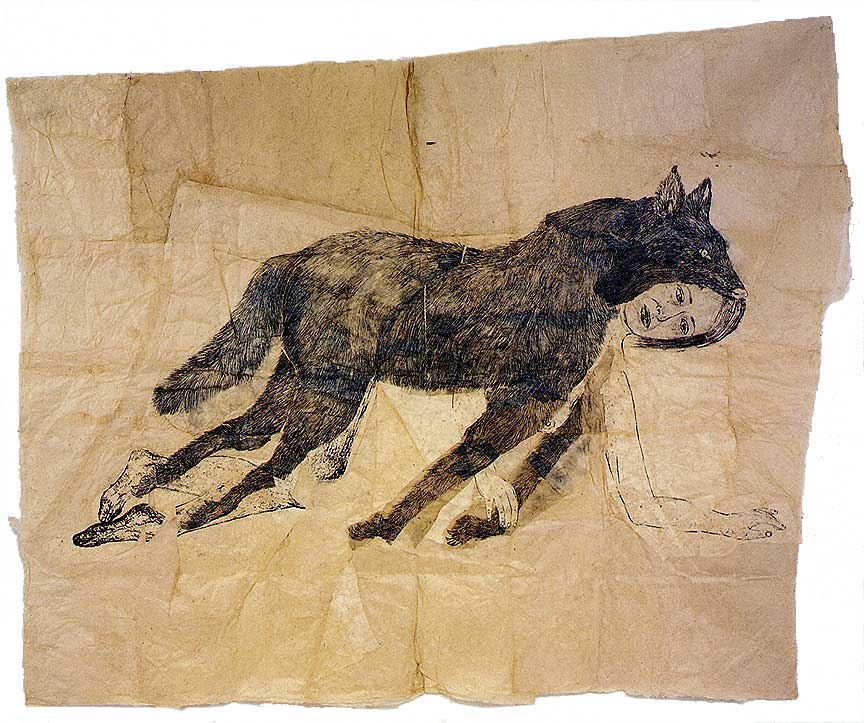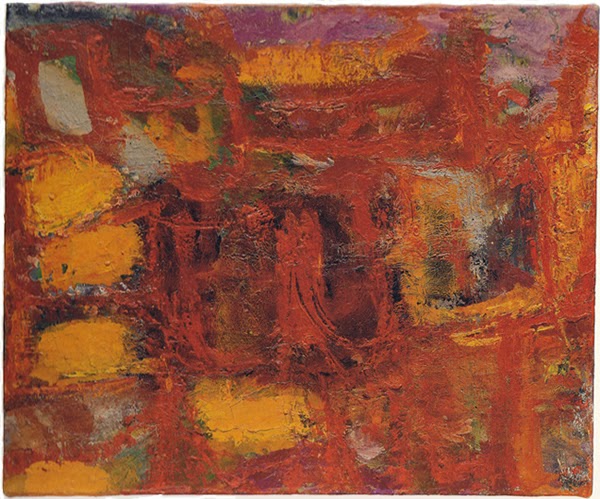kiki smith






kiki Smith is an American artist who was born in Nuremburg, Germany in 1954. The next year, her family moved to South Orange, New Jersey where she lived with her two younger sisters, mother and father. Her father, Tony Smith, was a minimalist artist, known for his large polyhedron-based structures. Smith and her sisters often spent time assembling paper models of his sculptures. She was exposed to the art world: Abstract Expressionism, Minimalism, and significant contemporary artists including Pollock, Rothko, and Newman from an early age.Kiki Smith is an American artist who was born in Nuremburg, Germany in 1954. The next year, her family moved to South Orange, New Jersey where she lived with her two younger sisters, mother and father. Her father, Tony Smith, was a minimalist artist, known for his large polyhedron-based structures. Smith and her sisters often spent time assembling paper models of his sculptures. She was exposed to the art world: Abstract Expressionism, Minimalism, and significant contemporary artists including Pollock, Rothko, and Newman from an early age.
Most of Smith’s work revolves around the human body and individual identity. She explores the fragility and resilience of life, the permeability of human skin, and narratives through a variety of media. Images and sculptures of iconic women, many literary, are used to invoke a universal humanity through their female experiences and stories. Beginning in the 1980s, her art utilized the human body as a format for discussing social and political issues such as race, gender, sexuality, and as a way of responding to the newly recognized AIDS epidemic. Her work represents a return the human figure, representation, and spirituality in the art community, themes which were neglected and even frowned upon during the reign of “modern” painting.
Smith produces work in bronze, wax, paper, plaster, glass, and many other media. She believes that all artistic methods are equal in value and significance. There is no material too lowly for artistic use. Paper, for example, is thought of as a delicate and feminine material, and it is often placed on the bottom end of art materials. Paper tears, creases, and is in greater danger of deterioration than many other substances. Smith points out that paper can be a strong, malleable, and archival material. Much like human skin, it is simultaneously fragile and strong, and it acts as a barrier that is permeable to light. She uses papier-mâché to create sculptures and joins many small sheets of paper together to support large-scale prints and drawings.
The artist also takes advantage of materials and techniques side-lined by the art world as lowly or feminine forms. Doilies, beads, ceramics, and plaster are not associated with fine art or high art forms. Smith takes these instruments, the discarded remnants of high art culture, and imbues them with deeper meaning throughout her work. Glass beads become the fluids of life, representing blood, urine, tears, and semen. Lustrous, metallic doilies mimic snowflakes and celestial bodies. Smith claims that “there is power in art forms that are neglected,” and she taps into that hidden power of the everyday and shares it with the audience.
Some people describe Kiki Smith’s artwork as a journey from the body’s hidden inside to the body’s relationship with the outside environment. Smith explains that she wants to reclaim our bodies from fragmentation within society and art history. People are divided into oppositions between male and female and between mind and body through society and culture. In the art world, the Cubists formally fragment the human figure to illuminate the varying facets of form.
Her work has also been discussed in the context of feminism and attempts to redefine the images of women through their own experiences. In the beginning, Smith presents the audience with situations with which all women must come to terms. She carefully avoids direct relationships to challenging issues like abortion, gender identity, and sexuality by centering her work around biological functions of the female body.
Kiki Smith’s artwork reflects a feminine point of view. The majority of her creations depict women and events specific to women, such as menstruation and pregnancy. She says that she wants to show that the experience of being a woman is a universal human experience.
One criticism that applies to many of Smith’s female figures is that they are vulnerable, weak, and in a state of suffering. These abject women are often constructed from wax, their facial features left softly modeled. In several cases, they are not in control of their bodily functions. Sculptures such as “Pee Body” (1992) and “Tale” (1992), are modeled after a universal woman. In “Pee Body,” a female figure squats low to the ground, her legs splayed out to the side to allow beaded trails of yellow urine flow out. The beaded strings are arranged in a simple wave pattern. They are simultaneously repulsing and beautiful. This universal woman is meant to evoke feelings of embarrassment for both the exposed sculpture and the voyeuristic viewer.
Some critics view her use of iconic and archetypal female figures, such as the Virgin Mary and Mary Magdalene, as a return to stereotypical female roles. But Smith’s “Virgin Mary,” produced in 1992, is by no means a stereotyped representation. This Virgin Mary is formed from a combination of beeswax and microcrystalline wax, and the impermanence of these materials challenges the idealized renderings of the Dormition and the Assumption. The removal of the figure’s skin reveals the humanity of her flesh and connective tissue. This sculpture shows the audience that the Virgin Mary was, at one time, a real and physical human being.
Kiki Smith herself appears as a figure in her work. The artist sometimes casts her face and body for sculptures and uses her portrait in several prints. In “Pietà” (1999) Smith shows herself in an iconic role, imitating the Virgin Mary who holds the body of her crucified son after his descent from the cross. In Smith’s version, the artist appears seated on a chair cradling the body of her deceased cat. This image also highlights the interjection of the artist’s personal life into a more universal narrative.
“Lying with the Wolf” and “Wearing the Skin” present the viewer with unknown women. These figures are not an example of what it means to be a good or bad woman or even an ordinary woman. The images do not refer to a specific event in any existing narrative. Instead, the scenes come from Kiki Smith’s own mythology and symbolic language. The women in these two drawings are based on St. Geneviève, the patron saint of Paris, who persuaded the Parisians to remain in their homes and pray in order to protect themselves from the army of Attila the Hun in 451 CE. The prayers of Paris were answered: Attila and his men were diverted and attacked the city of Orléans. Kiki Smith recalls seeing a portrait of the patron, whose purity and gentleness caused both wolf and lamb to lay down in peace.
The combination of woman and wolf is a frequent occurrence in Smith’s artwork, and this repetition starts to build a history for these two figures. The pair appears most frequently as characters from the Little Red Riding Hood tale.
As Kiki Smith incorporates neglected and sometimes rejected art forms and themes, her work transcends some of the contemporary social and political issues. By making work that is about a specific individual, Smith invites the viewer to experience a personal and emotional connection with each work. Iconic figures like the Virgin Mary are made human, and everyday people, including the artist herself, fill the roles of more universal narratives. Ordinary and commonplace materials are transformed into mystical and symbolic representations of everyday life.

Commenti